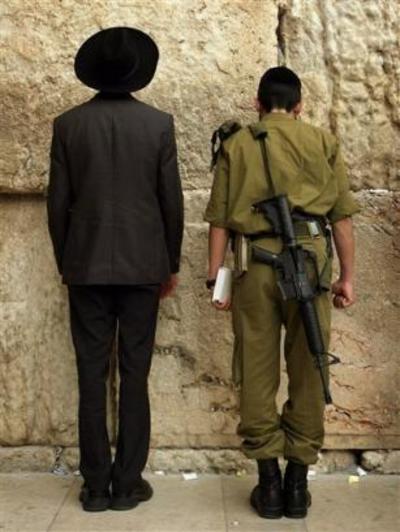Rabbi Yoel Moshe Solomon, the son of Rabbi Mordechai, represented the third generation of public activity for the settlement of the land of Israel – all in the spirit of the father of the yeshuv – the Vilna gaon. Rabbi Yoel Moshe was born in Yerushalaim in 1838. He was an Ilui in Torah and learned at the feet of the Torah giants Rabbi Moshe Leib of Kutna (author of the book Zayit Raanan) and the Rabbi of Yerushalaim, Rabbi Shmuel Salant.
Already in his youth he was known as the treasured son of the holy city. When he was sent, after his wedding, to complete his Torah education in the yeshivas of Lithuania, everyone predicted that he would become the Rabbi of the city of his birth. It quickly became apparent that this was not the direction of young Solomon. Rabbi Yoel Moshe rejected offers to become a Rabbi in Russia insisting that he would rather benefit from the work of his own hands in Eretz Yisrael. Together with his travel companion, Rabbi Michal HaKohen of Yerushalaim, Rabbi Yoel Moshe traveled to the city of Königsberg in Germany where he learned (in record time) the craft of lithography. He also published a book in Hebrew whose purpose was to teach this craft to other Jews.
When they returned to Yerushalaim, Rabbi Solomon and HaKohen joined with Rabbi Yechiel Brill and together opened a printing house. In 1863 they began to publish the first Hebrew newspaper in Yerushalim, ‘HaLevanon.’ ‘HaLevanon’ acted as the mouthpiece of the old yeshuv – especially of the Ashkenazi-Perushi community which was not quiet regarding its dependence on charity from chutz laaretz but rather searched helpful ways to improve the condition of the yeshuv. ‘HaLevanon’ also pushed towards the settlement of the Land – especially in the section dedicated to Torah ‘Kavod HaLevanon’ where it often brought essays by Rabbi Tzvi Hirsh Kalisher and the Rabbis of Yerushalim on this subject. ‘HaLevanon’ also saw great importance in communicating information regarding the land of Israel and its condition to the Diaspora.
The paper was closed following someone informing false information on it to the authorities. Rabbi Yechiel Brill continued to publish it – first in Paris and later in Mintz as a supplement of ‘Israelit’ – the mouthpiece of orthodoxy in Germany. Rabbi Yoel Moshe took a 15 year break from journalism, although he continued to send information to the ‘Levanon’ in its new format.
The cholera epidemic that broke out in Yerushalim (which took the lives of Rabbi Mordechai Solomon and his wife), aroused the youth of the community to initiate the building of new neighborhoods outside of the walls of the congested old city. Together with six friends, Rabbi Yoel Moshe established the neighborhood of ‘Nahalat Shivaa.’ The establishers of this neighborhood included no less than Rabbi Beinish Salant – the son of the Rabbi of Yerushalaim, and Rabbi Yosef Rivlin – the secretary of the community.
The fascinating personality of Rabbi Yosef Rivlin is sufficient to dispel many of the stereotypes that exist regarding the old yeshuv. Rabbi Yosef was a secretary and administrator – and actually practically established the general committee which acted as an umbrella organization to most of the Ashkenazi communities (Prushim and Chassidim). Contrary to popular opinion, it was specifically Rabbi Rivlin (who was in charge of the Haluka funds that the yeshuv depended on) who spared no effort in establishing new neighborhoods outside the city walls. He eventually became known as Rabbi Yoshe Shtetlemacher – Rabbi Yosef builder of neighborhoods.
Since the residents of the new neighborhood worried about living outside of the secure walls of the city, Rabbi Yosef left the city in 1865 to live outside by himself. He acted the same way with the many other neighborhoods he established. He would buy a house in the new location, move into it by himself, and then continue on to the next neighborhood. Rabbi Yosef, who was a scion of the students of the Gra, Rabbi Binyamin and Rabbi Hillel Rivlin of Shklov, acted upon the Redemptive Torah of the Gra (Rabbi Yosef’s son, Rabbi Shlomo Zalman Rivlin, published these teachings in the book ‘Kol HaTor’)
In his poems, which were published in the newspapers at the time, there burns the flame of faith in the beginning of the redemption (Atchalta deGeula), whose source is in the wisdom of the Kabbalah from the beit midrash of the Gra. In the years to follow, Rabbi Yosef joined his friend Rabbi Yoel Moshe to establish the agricultural settlements of Petach Tikva and Yehud and bought himself a stake there.
To be continued …
Sunday, March 12, 2006
The chareidim of old, Part II
Posted by chardal at 3/12/2006 09:30:00 PM
Subscribe to:
Post Comments (Atom)
